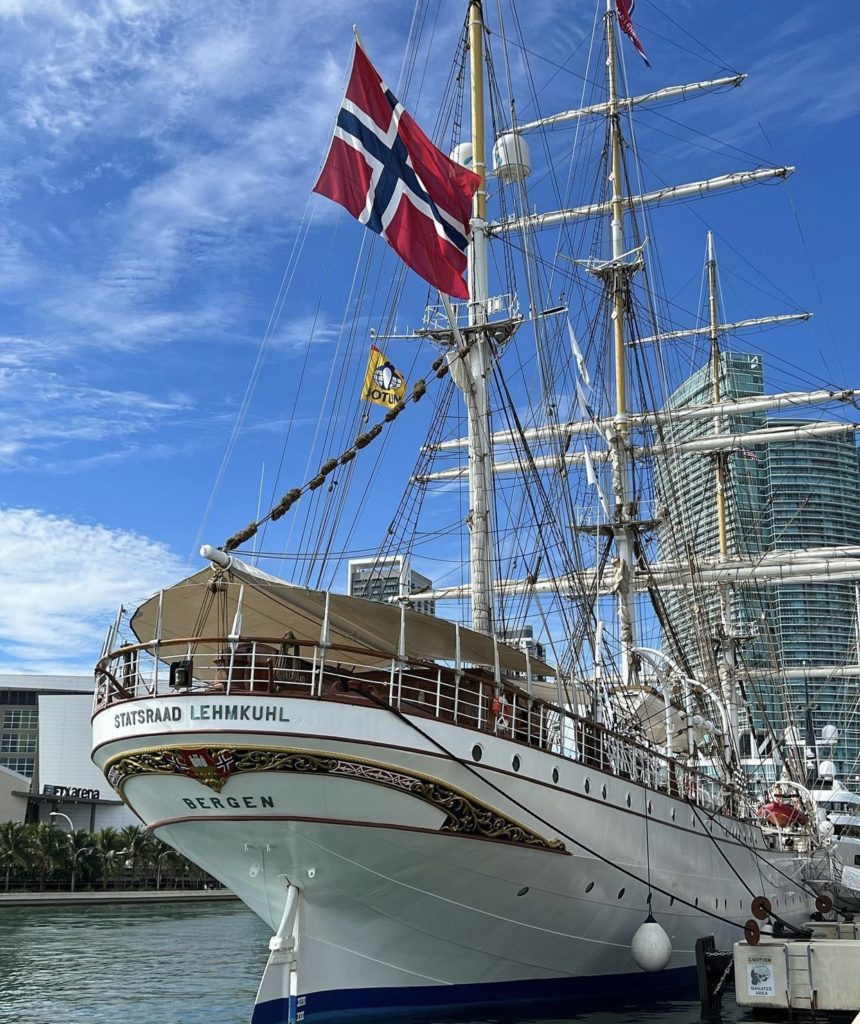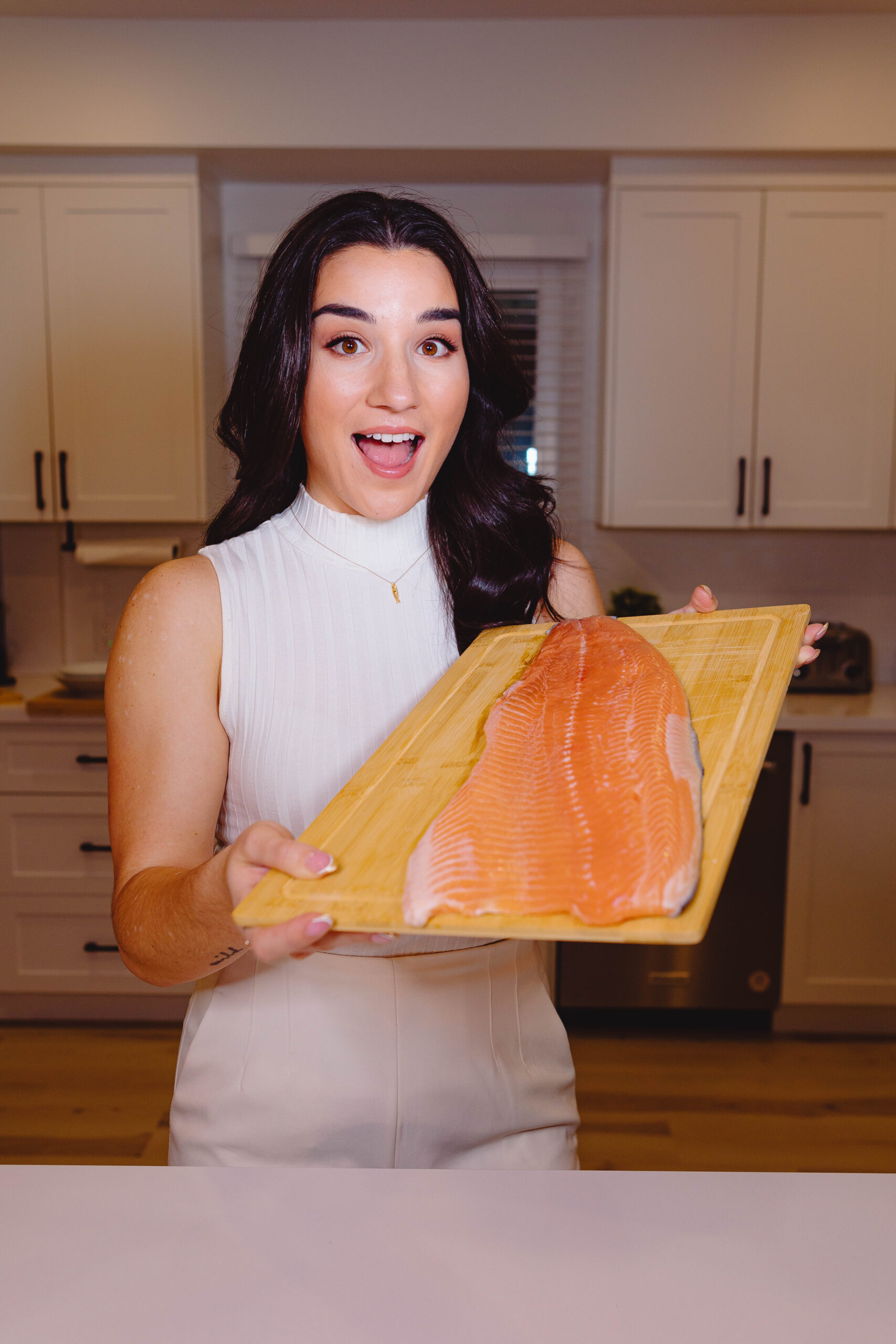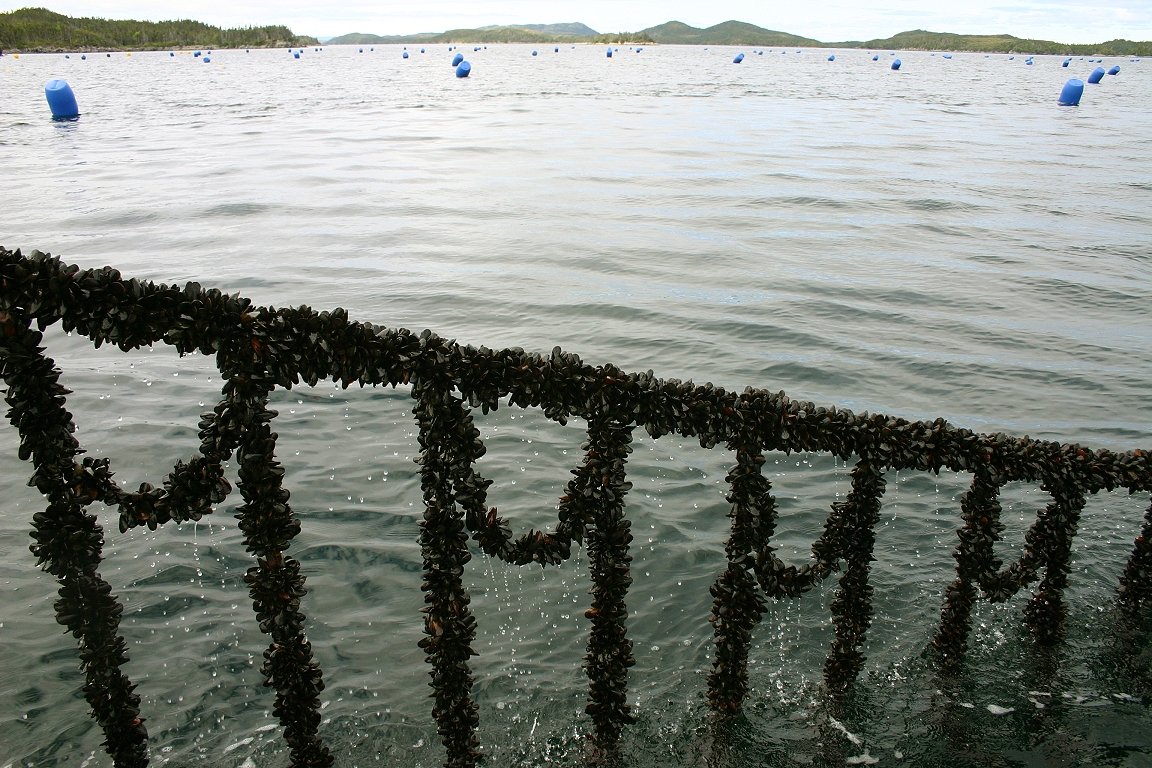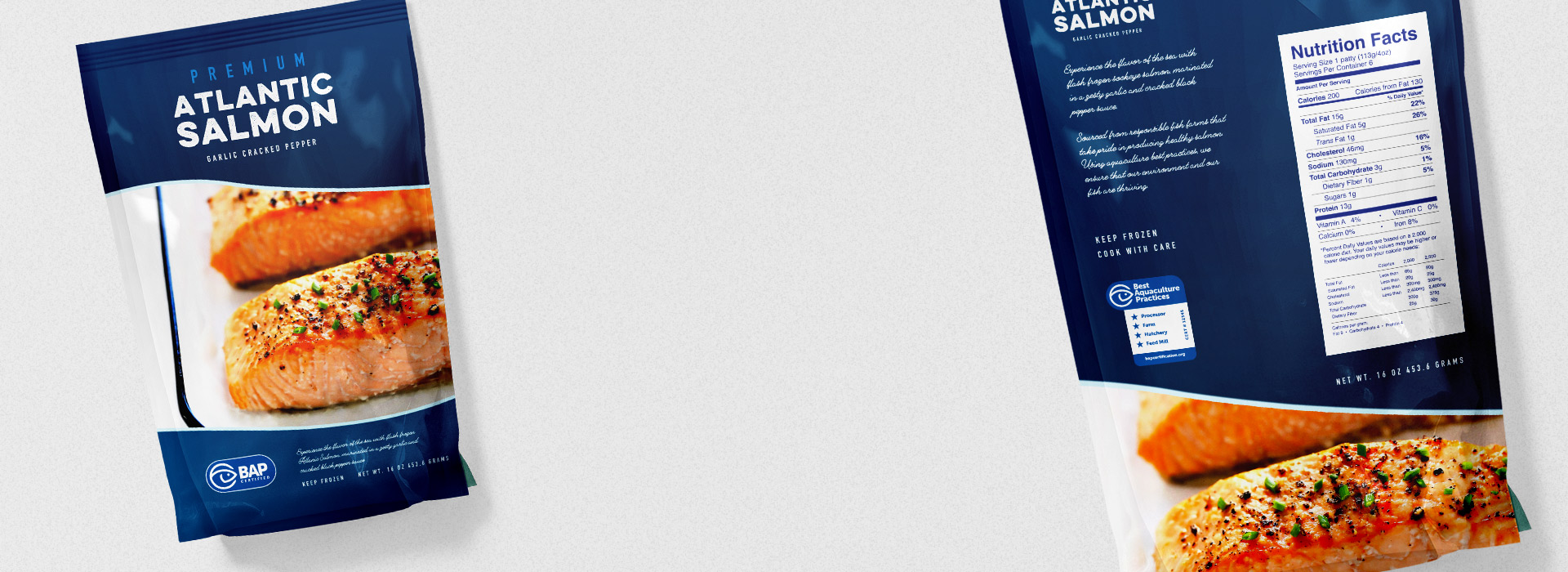
Reflecting on the One Ocean Expedition
My time onboard the One Ocean Expedition has finally come to a close. Since I’ve arrived back on dry land in Canada, I’ve been reflecting a lot on this experience. It’s been challenging to find the right words to describe it.
I went aboard the Statsraad Lehmkuhl not entirely sure what to expect. And I was completely caught off guard for the first few days. As someone who does not “rough it”, everything about life onboard was a shock to me. For perspective, I’ve never been camping. I even had to borrow a sleeping bag because I don’t even own one – that’s how ‘out of my element’ I was.
But, I was onboard the ship for a reason and that was to learn as much as I could about blue foods and sustainable aquaculture and work with fellow experts to identify opportunities for blue foods to support sustainable development.
I ended up doing that and so much more. I met so many incredible people, I made memories that will last a lifetime, I surprised and challenged myself, and I am walking away from this experience very optimistic about the future of blue foods.
One Ocean Expedition Reflections
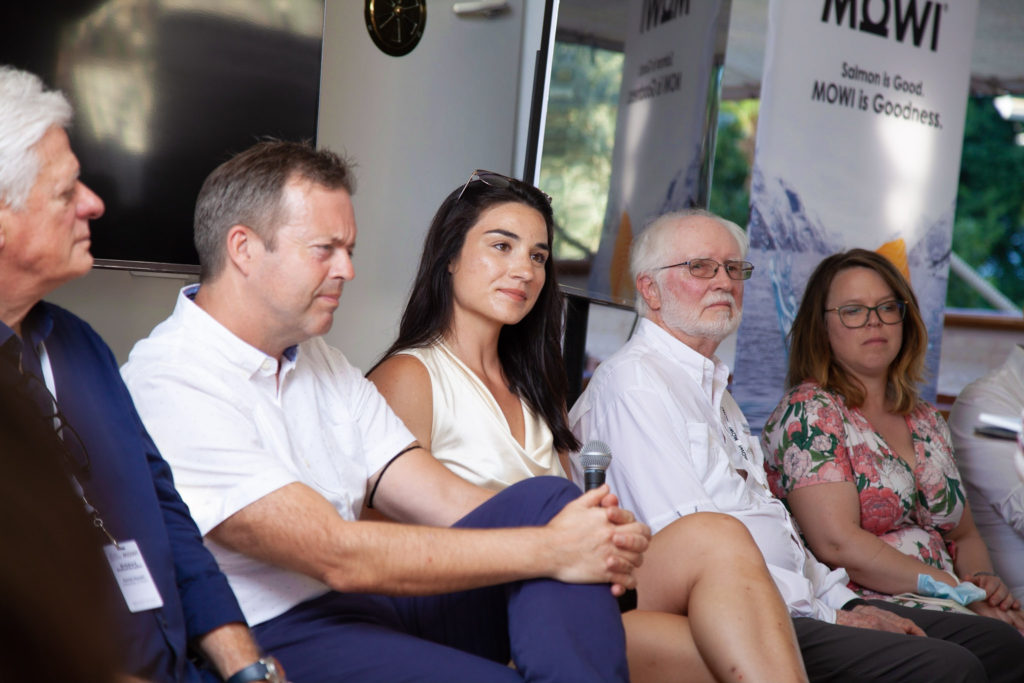
The future of blue foods and sustainable aquaculture
Our population is expected to exceed 9 billion by the year 2050 and while there’s plenty of disagreement in the food systems world, one thing we can all agree on is that our current food system is not equipped to sustainably feed that many people while maintaining our global climate commitments.
Food production accounts for 25% of all greenhouse-gas emissions. Blue foods can help end hunger & accelerate the creation of a truly sustainable global system thanks to their low carbon footprint and high nutritional profile.
As a fisheries scientist and sustainable seafood advocate, I was excited to be onboard the Statsraad Lehmkuhl to work with other experts on identifying how blue foods can contribute to global food security, sustainable food systems, and healthy oceans.
The world of aquaculture is still relatively new to me, so I was excited to learn as much as I could about the role of aquaculture in locking the potential of blue foods and a sustainable ocean economy.
Here are some key takeaways that I wanted to share with you all:
- Site selection is incredibly important for sustainable aquaculture development.
Different species have different requirements for site locations, but generally, the site needs to be protected from adverse weather while allowing enough ocean currents to move through to avoid organic loading. - Vaccines have been a game changer for sustainable aquaculture.
Improved fish vaccines in salmon aquaculture dramatically reduced the spread of pathogens in fish farms. Some say it’s what saved the Norwegian aquaculture industry and was a turning point for aquaculture globally. - The rest of the seafood supply chain must grow along with aquaculture production.
It’s no use to produce more fish from aquaculture if we don’t have the capacity to process and distribute it efficiently. It’s important to approach aquaculture development with the entire supply chain in mind. - We need greater political will to increase seafood production.
A lack of political will may be one of the largest barriers to expanding aquaculture development in today’s world. Individual countries and regions need to allow seafood to address concerns of food security and poverty.
At the end of the day, aquaculture is not going anywhere. It is the fastest growing food producing sector in the world and so rather than try to fight it, we should be working together to support the industry in becoming the most sustainable that it can be.
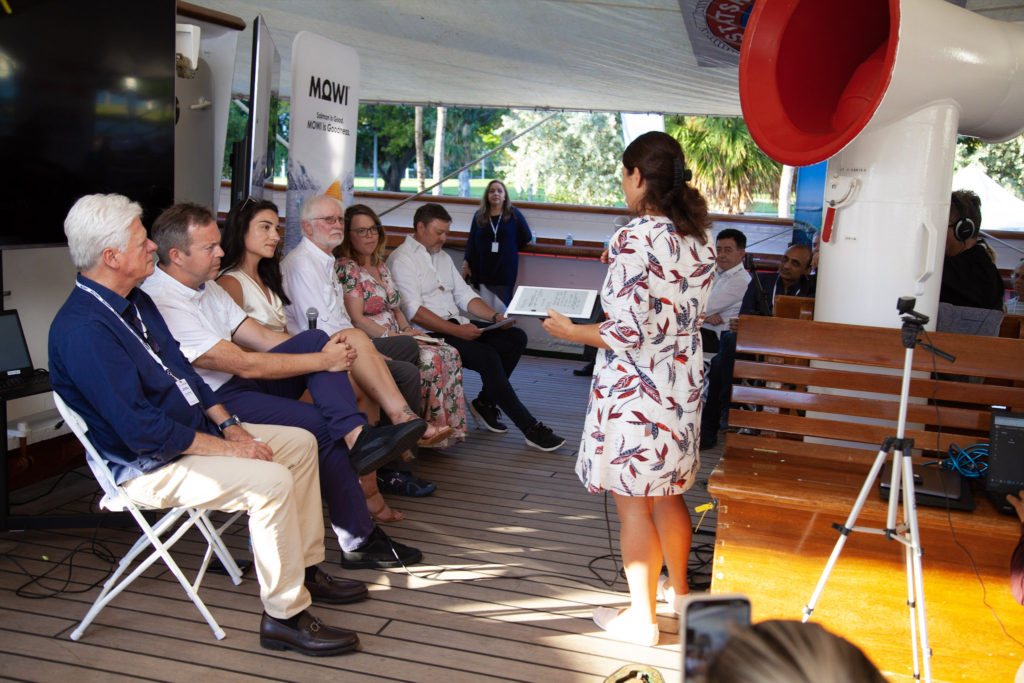
How Mowi is leading the Blue Revolution
Speaking of sustainability, let’s talk about Mowi, the world’s largest producer of farmed salmon and my partner on the One Ocean Expedition. This entire experience was made possible by them and I feel so fortunate to have had the opportunity to work with Mowi on my first major aquaculture project.
Mowi produces the equivalent of over 6 million meals a day and does so with ocean health at the top of mind. Their sustainability policies are aligned with the UN Sustainable Development Goals and they have been named the world’s most sustainable protein producer for three years in a row. Mowi’s goal is to lead the “Blue Revolution” and make fresh seafood more accessible all over the world, while transforming global food systems to be more sustainable.
Sustainability at Mowi means increasing the world’s access to healthy and sustainable food from the ocean while having a positive long-term economic and social impact.
Here are just some of the ways that Mowi is leading the Blue Revolution:
- 100% of Mowi’s yearly harvest volumes are sustainably certified by a GSSI-recognised standard.
- 100% of their raw feed materials are traceable. This means they know exactly where every single ingredient in their fish feed came from. All the wild fish in their feed comes from MSC certified fisheries or fisheries that are part of FIPs, and all their soy is certified deforestation-free.
- They are working towards making their plastic packaging 100% recyclable, reusable, or compostable by 2025.
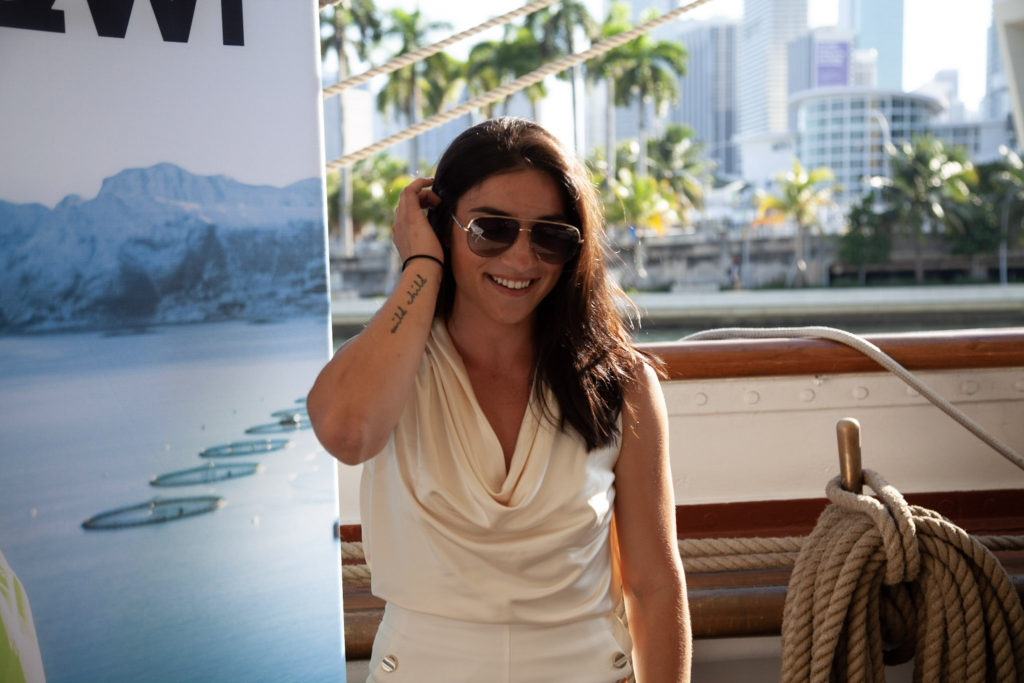
Better seafood communication is still necessary
One thing that was abundantly clear to me throughout this trip is the need for better communication in the seafood industry. I was blown away by the work that the scientists on board the ship were doing in the realm of novel feed development, introducing vaccines, improving marine spatial planning, and investing in new net pen technology. The only problem? Not enough people know about it!
There is incredible work being done in the aquaculture space to make the industry more sustainable and able to support a growing population and a healthy planet. But we need to talk about it more. It was clear to me that the seafood industry still has a long way to go in terms of communicating science and sustainability to the general public.
Canadian and Norwegian Aquaculture
More broadly speaking, it was quite interesting to be a Canadian onboard a ship of mostly Norwegians and explore how one country has embraced salmon farming, while the other has resisted it and what the different outcomes have been.
Personally, I think Canada has a huge potential to be a leader in sustainable aquaculture and I’ve been quite disappointed with how decision makers have hindered its growth ability. I wrote about this earlier this year after the Canadian government’s decision to abruptly close aquaculture operations in the Discovery Islands.
I learned a lot from the Norwegian perspective while aboard the ship and I’m hoping I can bring this new knowledge back to Canada to hopefully begin changing the conversations around Canadian aquaculture.
Final Thoughts
Having the opportunity to be onboard this ship and a part of the One Ocean Expedition has truly been one of the highlights of my career.
This trip challenged me, pushed me outside of my comfort zone, and connected me to so many incredible people. I feel so optimistic about the future of blue foods and a sustainable ocean economy after being onboard.
What is abundantly clear to me after this trip is that we need to be talking about aquaculture much more. We need more serious conversations about how to support aquaculture development in order to increase access to blue foods, revitalize coastal economies, and preserve traditions.
I know that aquaculture has been a controversial subject, especially in Canada. But what I have learned on this trip is that every single person involved in the industry today is working to make it better. Those involved in aquaculture acknowledge the struggles that the industry has faced in the past, but rather than give up and shut down a viable method of food production, they are working incredibly hard to make the industry better.
Aquaculture symbolizes a new hope for the seafood industry and we all should be embracing it with open arms.
